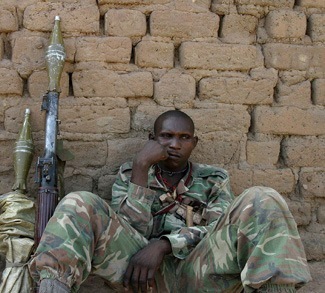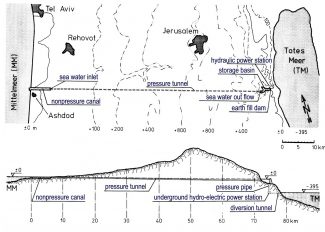As the world observed the second anniversary of the Taliban’s takeover of Afghanistan on August 15th, attention has shifted to the changing landscape of terrorism in the region. The two years since Kabul’s fall have raised concerns about the impact on regional stability and security. A complex picture of resurgent extremist groups, human rights abuses, and geopolitical challenges with Afghanistan’s de facto rulers has emerged.
President Biden recently claimed that Al-Qaeda is no longer in Afghanistan and that the Taliban is aiding the US in countering terrorism. However, the situation on the ground doesn’t seem to align with this assertion. Biden’s sentiment was echoed by US diplomats following their first official meeting with Taliban representatives in July this year. While the US State Department acknowledged decreased large-scale attacks in Afghanistan, supporting the Taliban’s counterterrorism efforts may be overlooking broader transnational threats.
The Perception of Security in Afghanistan
The Taliban’s military victory in Afghanistan has emboldened various militant groups in the region, many of which were displaced before 2021. This triumph has granted these groups the freedom to move across the region with complete impunity. According to a report from the UN Sanctions Monitoring Team, Al-Qaeda remains active in Afghanistan with an estimated strength of 2,000 fighters, albeit with a discreet presence. In a display of solidarity with Al-Qaeda, the Taliban has assigned Al-Qaeda members to important administrative and military positions. Notably, Qari Esanhanullah and Agha Hakeem, both Al-Qaeda veterans, have been made governors of crucial eastern provinces—Kapisa and Nuristan, respectively. The most disconcerting appointment is that of Tajmir Jawad Hafizallah, who now serves as the Deputy Chief of the Taliban’s Intelligence wing, GDI. Hafizallah’s association with the infamous Kabul Attack Group, a joint special-operations unit led by Al-Qaeda and the Haqqani Network with support from Pakistan’s Inter-Services Intelligence, is a cause for concern. This elevation alone should prompt the Biden administration to reconsider its stance on Afghanistan.
Similarly, the Afghan branch of the Islamic State (ISKP) maintains a significant presence in various pockets of Afghanistan’s eastern and northeastern provinces. Established in 2015, this group is notorious for executing large-scale, intricate attacks in urban areas. Their targets encompass religious and ethnic minorities, as well as high-profile Taliban officials. As seen in the targeting of a senior Taliban leader’s funeral service in the northern province of Badakhshan, which resulted in over 30 casualties, including a provincial police chief.
In addition to countering ISKP, the Taliban also contends with resistance forces within Afghanistan. Recently, groups like the National Resistance Force and the Afghanistan Freedom Front have substantially escalated their operations. Their focus has been on targeting the Taliban’s military infrastructure and eliminating senior Taliban commanders. Despite lacking the necessary operational capabilities to pose a grave threat to the Taliban regime, these groups persist in challenging the Taliban’s narrative of a peaceful Afghanistan.
Regional Threat Landscape
Following the fall of Kabul, Pakistan has experienced a notable surge in attacks, primarily attributed to the Tehreek-e-Taliban Pakistan (TTP), an offshoot of the Taliban. TTP’s operational capabilities have been significantly enhanced and the group has established new support bases as evidenced by attacks extending beyond their traditional strongholds, such as the recent assault on a military garrison in Zhob, Balochistan Province. Moreover, the TTP has successfully united more than 35 fragmented groups and smaller terrorist entities allowing it to diversify targets and escalate kinetic activities within a short timeframe. Despite Taliban disavowals of harboring terrorists, substantial evidence points to the Taliban’s influence over the TTP, including facilitating the movement of TTP leaders across borders. Notably, several senior TTP commanders, starting with the killing of Omar Khorasani, the mastermind behind the 2014 Peshawar Army School Attack, have been killed under mysterious circumstances inside Afghanistan. Additionally, TTP Chief Noor Wali Mehsood made a narrow escape during an attack in Nangarhar province in Afghanistan where he was meeting with the Taliban’s provincial council. The presence of high-ranking TTP operatives in eastern and southeastern Afghanistan sheds light on the Taliban’s connection to the TTP and reveals the TTP’s restructuring with ambitions mirroring the Taliban’s success in Kabul. Concurrently, while the Afghan Taliban’s primary adversary remains the Islamic State’s Afghan affiliate (ISKP), the latter has shifted its focus towards Pakistan. This strategic shift is evident in the escalation of attacks on civilians, as evident in the tragic suicide bombing in Bajaur district of northwestern Pakistan resulting in over 50 casualties.
Beyond Pakistan, other transnational terrorist groups in Central and South Asia have similarly restructured their ranks and revitalized their operational capacities. A UN report from July highlights that East Turkestan Islamic Movement, a Uighur militant group aspiring to gain control over Xinjiang province in China, has established bases across northern and northeastern Afghanistan. Furthermore, the Taliban has facilitated the transfer of Uighur militants from Chinese border areas to different Afghan provinces for training, indicating renewed alliances between the Taliban and various Al-Qaeda-affiliated entities. The Afghan Taliban has also relocated more than 200 Tajik militants from the Al-Qaeda-affiliated Jamaat Ansarullah (JAU) group in Tajikistan to Afghanistan. Additionally, foreign Tajik fighters from JAU have been incorporated into the Afghan Taliban’s ranks.
The Way Forward
The Biden administration’s propensity to downplay the terrorism risks emanating from Afghanistan is worrisome. It’s imperative that the United States should not accept the decrease in large-scale attacks in Afghanistan at its face value, instead, should strive to gain a more comprehensive understanding of the larger transnational threat environment. In light of ground-level realities, the United States should establish specific prerequisites before initiating any formal negotiations with the Taliban. One critical demand should be the removal of Al-Qaeda members from the ranks of the Taliban, along with severing ties with regional jihadist organizations. Moreover, the Taliban’s covert support to the TTP in Pakistan should also cease.
Recognizing the potential for cross-border actions by Pakistan, the U.S. should demonstrate its readiness to support Islamabad in ensuring the effectiveness of such cross-border operations. This strategic posture adopted by Washington has the potential to compel the Taliban to reconsider its ties with the TTP and, to some degree, its relationship with Al-Qaeda. Before embarking on bilateral dialogues, substantive evidence must surface proving the Taliban’s genuine commitment to meeting these specified conditions. This approach not only lays the groundwork for constructive talks but can also allow the international community to pursue further objectives of an inclusive government and reopening of higher educational institutions for women in Afghanistan.
The views expressed in this article belong to the authors alone and do not necessarily reflect those of Geopoliticalmonitor.com.




